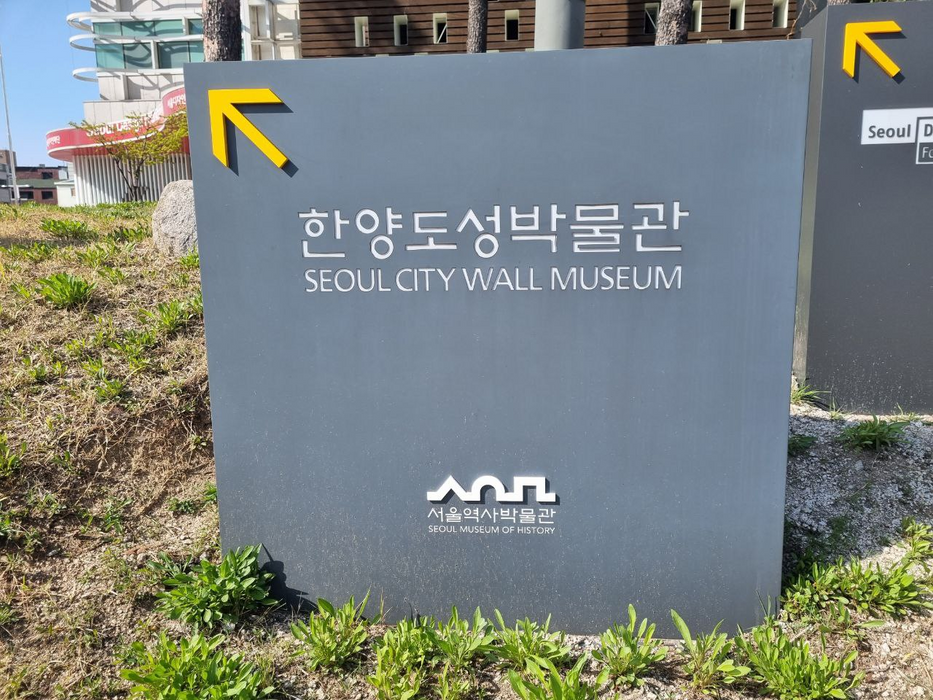I think around 5-10 years ago I wasn't a big fan of museums or history. I don't mean that it wasn't interesting to me at all, but I wouldn't run to the museum when I can go to the park or somewhere else.
But now whenever I see a museum that I haven't visited yet, I add it to my wish list! Even if it is a very small museum with a couple of exhibitions I can spend there at least an hour. Why? What I am doing there? The answer is easy. I am learning history!
Today I want to take you to the Seoul City Wall Museum, and before entering the museum, let me briefly tell you about Seoul City Wall.

Intro
The old name of Seoul was Hanyang, and that is why in the Korean language that museum is called Hanyang City Wall Museum. There was a wall around the city, and that wall was protecting the city from enemies.
Of course, most parts of the wall were ruined during the wars and stayed in history. So, today it is a part of tourist attractions.
Hanyang city was selected as the capital city in 1394.
Location
The museum is located in the historical part of Seoul, in the Dongdaemun area. It is in the building of the Seoul Design Foundation, and I think it is one of the reasons, why the museum has so a creative entrance :)

Museum facilities
What I always loved in Korea is its' creativity. Each museum in Korea is so well-planned and organized. And most museums have digital spaces with interactive exhibitions.

And the Seoul City Wall museum is not an exclusion. There are 3 floors in the museum and several halls. One of the halls is a library, and everyone can come here to read books about Seoul and its history.

I fell in love with digital touch screens which tell history and show the photos on the wall. I think if we had such facilities at school when I was a kid, I would start loving history much earlier.

I won't talk a lot about the museum itself but I would like to tell you about the wall's history.
By the way, the entrance to the museum is free. And when I visited it there was a 5-mins survey, and if you do it, you get a hand sanitiser for free :)
Seoul City Wall
Here is the map of Hanyang city and the Hanyang City wall.

Looks complicated? Where is the wall here? Let's take a look at that map then :)

That is what the wall looks like. And as you can see there are different gates, and each of them is located at specially designated places. In the past, anyone who wished to enter or exit the city had to pass through one of the gates. The Seoul City wall had 8 gates built into it, and 2 water gates built under it.
The construction of the wall has started in 1396 when the country was ruled by King Taejo, and it took around 350 years to finish it.

And of course, during those 350 years, the stones which were used in construction, the shape, and the method of building the wall was changing as well. Each time a collapsed section was repaired, more advanced techniques were employed, so that wall stands as a cultural heritage that traces the development of Korean wall building technology.

Another interesting fact is that a wall was built along with the natural topography of the site the layout inside the wall was organized according to the Confucian theory of the ideal capital city. The main streets inside the city were connected via the city wall gates to major roads that led to all parts of the kingdom.

Since ancient times, Koreans have developed a tradition of building city walls along mountain ridges. The Hanyangdoseong (Hanyang City Wall) is a continuation of this tradition, which minimizes the disturbance of the natural surroundings and maximizes the stateliness and effectiveness of the structure. So, everything inside and behind the wall goes in harmony with the natural forms.

Also, there are 297 special stones on that wall. The inscribed stone blocks served as a system of accountability for work performed. These stone blocks vary in their appearance and content according to the time period in which they were carved.

I have seen some parts of the wall, including the one which is located right next to the museum. But I want to visit the rest part as well.
My story gets too long, so I will finish here and will leave for you a quote from the Korean historical book.
The Royal Ancestral Shrine is where the [spirit tablets of the royal] ancestors are enshrined, and filial piety and reverence are exhorted. The Royal Palace is where the solemn authority of the state is displayed, and the affairs of the state are carried out. The City Wall is where the [boundary between] inside and outside the capital is carefully guarded, and the state is secured. These are all priorities for the rulers of the state. /Annals of Taejo. 3rd day of 11th month, 1394/
Comments
Post a Comment